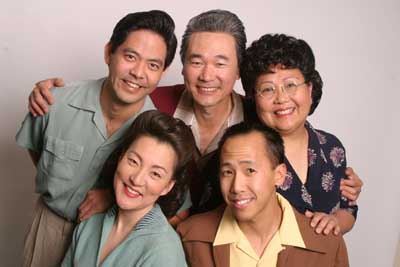
UPDATE: THIS EVENT IS NOW FREE! (Ticketmaster processing charges still apply)
It probably irks Chinese people to no end that their centuries of culture is often crammed into just a couple of off-hand images: Bruce Lee and martial arts, Chairman Mao holding up his Little Red Book, Jackie Chan and martial arts, the traditionalist flash of a Beijing Opera performer in full makeup and drag, Jet Li and martial arts. Oh, and martial arts of any kind, whether or not it’s from China. The mainstream American consciousness seems to be oblivious to the depth and richness of Chinese culture, and to its vast variety.
But Chinese culture spans a huge area and a long timeline. Remember, China is so big and diverse that it even has seven separate groups of language dialects. A Chinese person from Beijing may not be able to understand someone from Hong Kong, because Mandarin is spoken in Beijing and Cantonese in Hong Kong.
The country’s government has been on an international campaign since before last year’s Beijing Olympics to educate the world about all of China. Because the country’s taking over the world stage as a economic power (by most accounts, it’ll eclipse Japan as the world’s second-largest economy in 2010, second only to the U.S.), it’s been keen to promote cultural exchanges and send performers halfway around the world. You can expect this public-relations campaign to continue through at least next year’s 2010 World Expo, which will be held in Shanghai.
The ongoing effort to showcase China’s riches is great for those of us who are interested in the breadth of its culture.
Here in Denver we have a rare opportunity to catch a spectacle of an event, “Carnival China Style,” that will bring 70 performers and support staff from all over China to the U.S. and Canada starting after the new year. A Denver stop’s been announced for Wed. Jan. 13 at 7 pm at the Ellie Caulkins Opera House, the classy auditorium at the Denver Center for the Performing Arts.
Other stops on the tour include Toronto, Ottawa, Chicago, St. Paul, Denver, San Francisco, Sacramento, Reno, Seattle and other cities. President Obama enjoyed some of the performers traveling in this troupe during his recent visit to China.
The evening of entertainment is based on a Chinese traditional festival format and it’ll highlight the long history, grace, beauty, populism, diversity and folk nature of Chinese culture. The evening won’t just be traditional dance and music, either.
There’s a segment featuring Wang Feng, a popular rock star in China, and even the woman who hold the Guinness World Record for twirling the most hula hoops at once. Who knew that’s a Chinese cultural heritage?
Here are some descriptions from the event’s press release: Continue reading




 Like any school kid, I loved going on field trips when I was young, But, since we lived in Japan until 3rd grade, my earliest memories of field trips weren’t the typical ones that American kids remember. I remember looking out of a school bus and seeing steaming lumps of sticky rice being pounded into mochi for New Year’s celebrations, for example (I think we were on the way to a shrine where we learned about Oshogatsu, or Japanese New Year, traditions).
Like any school kid, I loved going on field trips when I was young, But, since we lived in Japan until 3rd grade, my earliest memories of field trips weren’t the typical ones that American kids remember. I remember looking out of a school bus and seeing steaming lumps of sticky rice being pounded into mochi for New Year’s celebrations, for example (I think we were on the way to a shrine where we learned about Oshogatsu, or Japanese New Year, traditions). 






